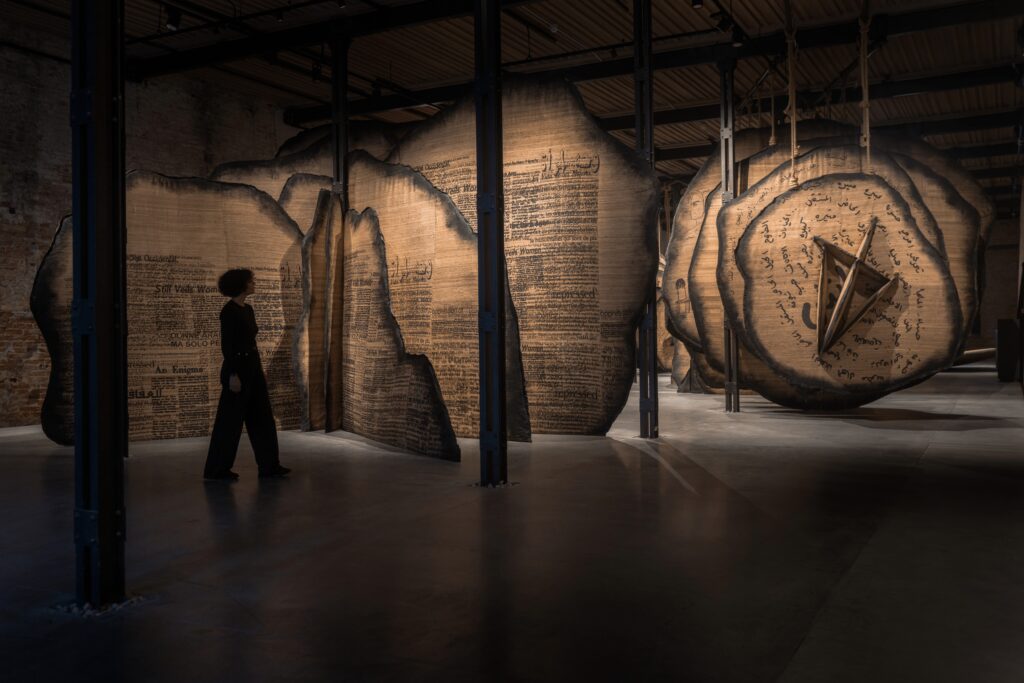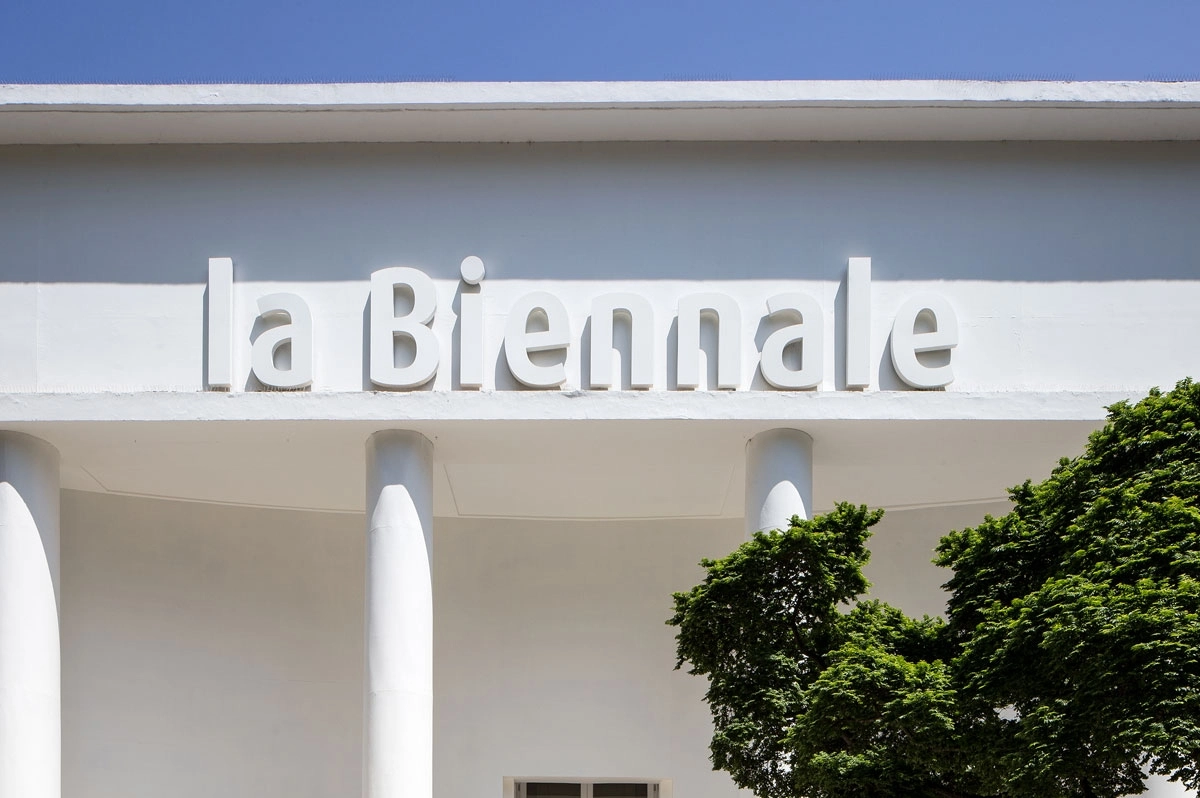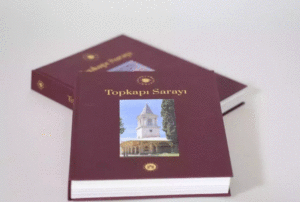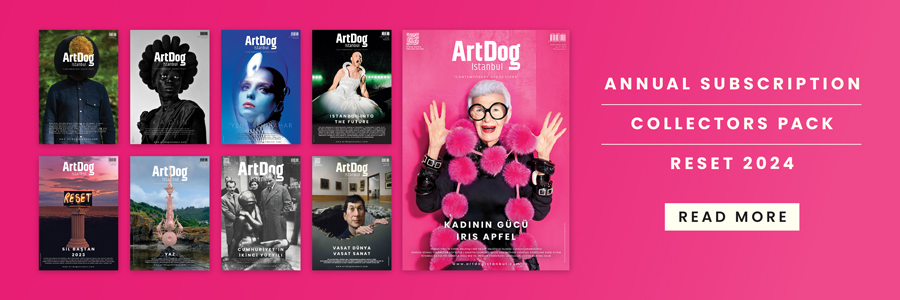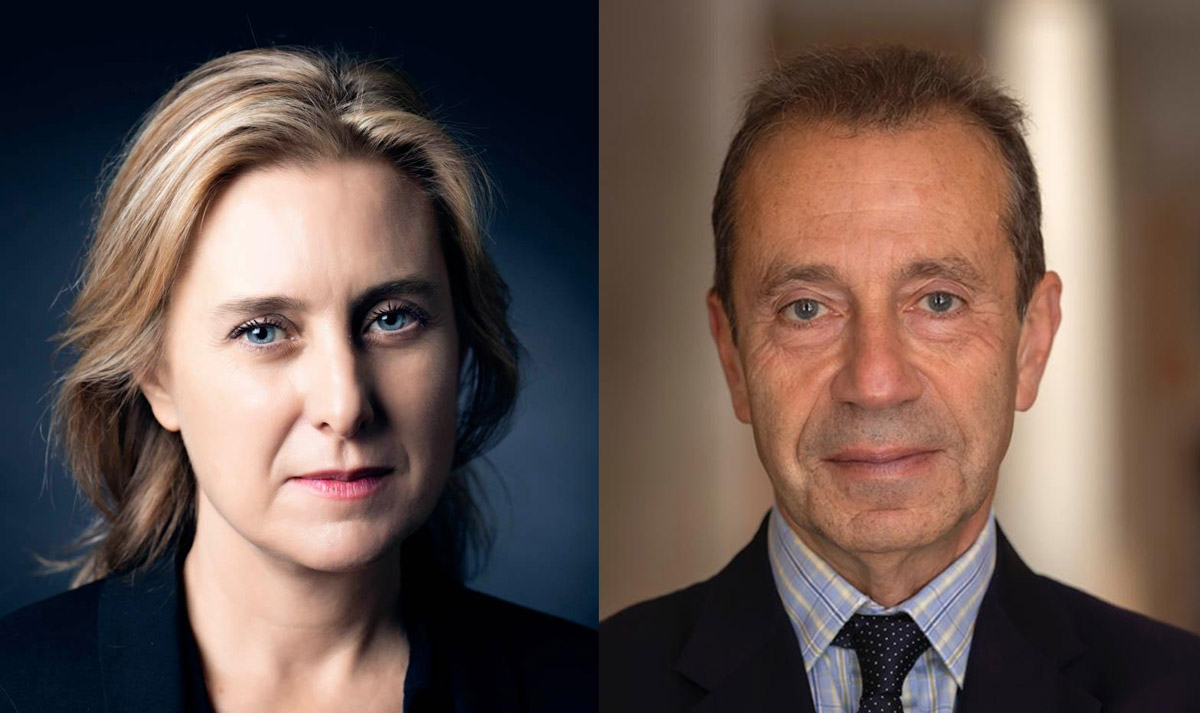This year, The 60th Venice Biennale hosts 331 artists and collectives. While the exhibition curated by Adriano Pedrosa, “Stranieri Ovunque – Foreigners Everywhere,” is divided into two parts, it explores various crises related to movement, language, nationality, and identity. However, on the other hand, the national pavilions also draw attention with their intriguing and brave themes hosting indigenous heritage, wars and despair going on in the world.
Here are some of the best pavilions of the Venice Biennale, showing the things that the world hesitates to speak of.
Germany Pavilion
One of the biggest hits of this year’s Venice Biennale is the German Pavilion, with an expansive and creepy show about crossing borders. Çağla Ilk, curator of the pavilion and director of Kunsthalle Baden-Baden, explains in the accompanying text that the title of the exhibition, “Thresholds,” came to her during a stroll along the metal dock linking the vaporetto to La Certosa. This dock, typically overlooked, serves as a transitional space. Upon disembarking the vaporetto, most individuals focus on the forested island’s connecting trail rather than the path leading up to it. Ilk has thought of highlighting the significance of these intermediary spaces, perhaps even more so than the areas bordering them. Germany Pavilion looks through time and spaces between these intermediary spaces.
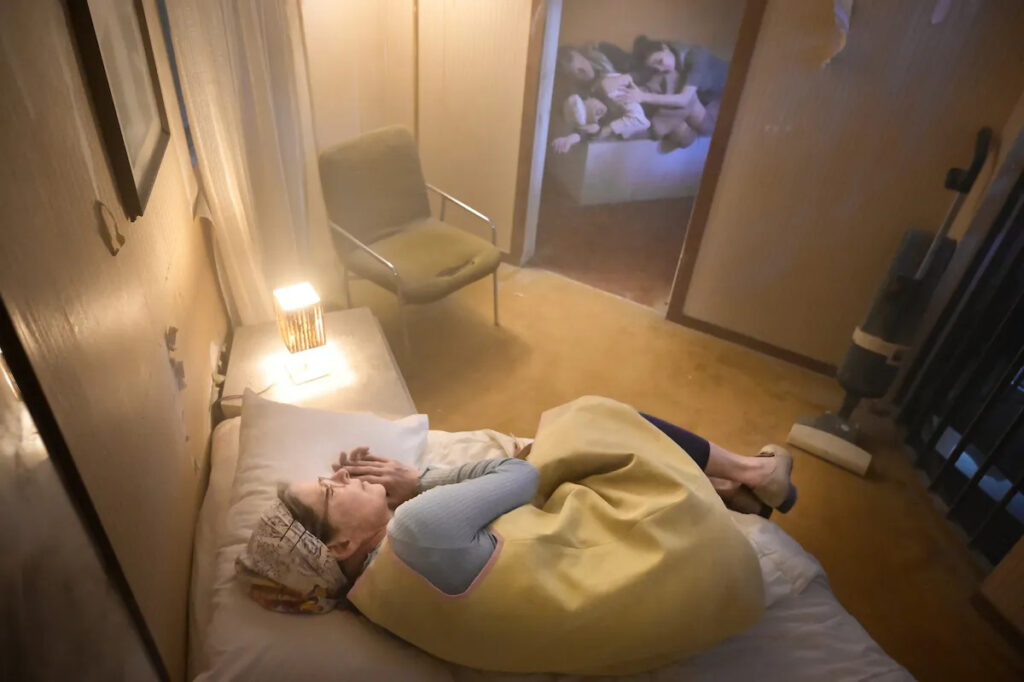
PHOTO THOMAS AURIN
Egypt Pavilion
This year Wael Shawky, an artist hailing from Alexandria, represents Egypt. Shawky’s 2023 film “I Am Hymns of the New Temples” will be showcased in a solo exhibition at Museo di Palazzo Grimani. Shawky presents ‘Drama 1882,’ a filmed adaptation of an original musical play he directed, choreographed, and composed. The piece revolves around Egypt’s nationalist Urabi revolution against imperial influence in 1879-82, notably crushed by the British in 1882, who then occupied Egypt until 1956. Shawky has been inspired by the Biennale Arte 2024 theme “Foreigners Everywhere,” Shawky delves into the discourse surrounding the Urabi revolution, questioning the notion of foreigners and occupiers. Sung in classical Arabic by professional performers, “Drama 1882” marks a departure for Shawky, incorporating elements of drama and spectacle into his typically puppet-centric works.
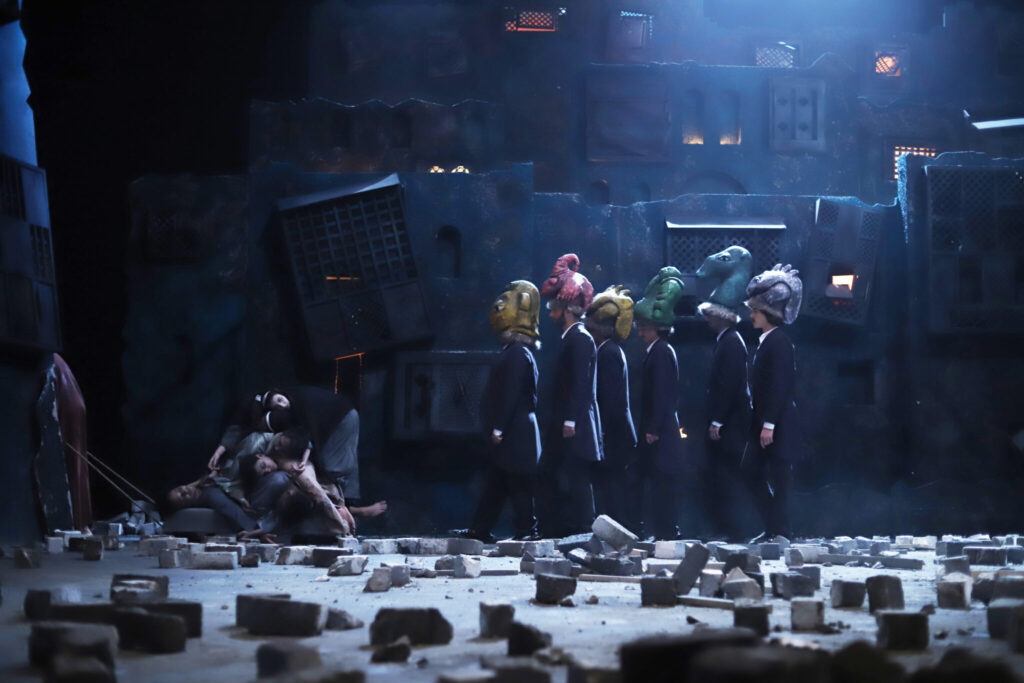
Courtesy the artist, Sfeir-Semler Gallery, Lisson Gallery, Lia Rumma, Barakat Contemporary
The Great Britain Pavilion
Artist John Akomfrah’s latest project, Listening All Night To The Rain, is filled with hours and hours of footage, a sound playing independently of it is a melange of cultural symbols. Titled ‘The Windrush Generation’, the work is accompanied by the Mau Mau uprising in Kenya, Rachel Carson’s writings, the Vietnam War, and impending ecological doom is an audiovisual mosaic, which implies that every struggle embroiling the Global South is interconnected.
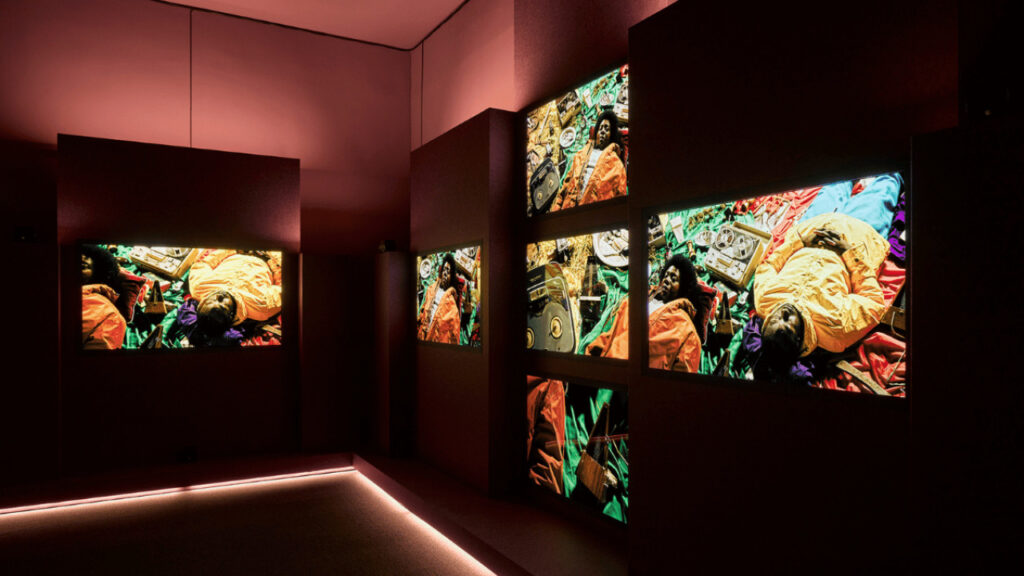
Poland Pavilion
This year, Poland had some difficulties at the biennale, changing of artists and cancellations, and then decided to be there. Finally, they have chosen Open Group, a Ukrainian collective, to represent the Poland Pavilion. An installation called ‘Repeat After Me II’ (2024), features two videos, both of which include interviews with Ukrainians who weathered Russia’s invasion. Some subjects in a 2022 video speak in Lviv, while others in that piece’s 2024 counterpart are pictured in Western Europe, where they now reside. What makes the work special, is when the interviewees describe the noises of mortars being fired and air raid sirens going off, their words appear as subtitles. These Ukrainians, looking the Open Group’s cameras dead in the eye, repeat these sounds repeatedly while the text is highlighted à la karaoke.
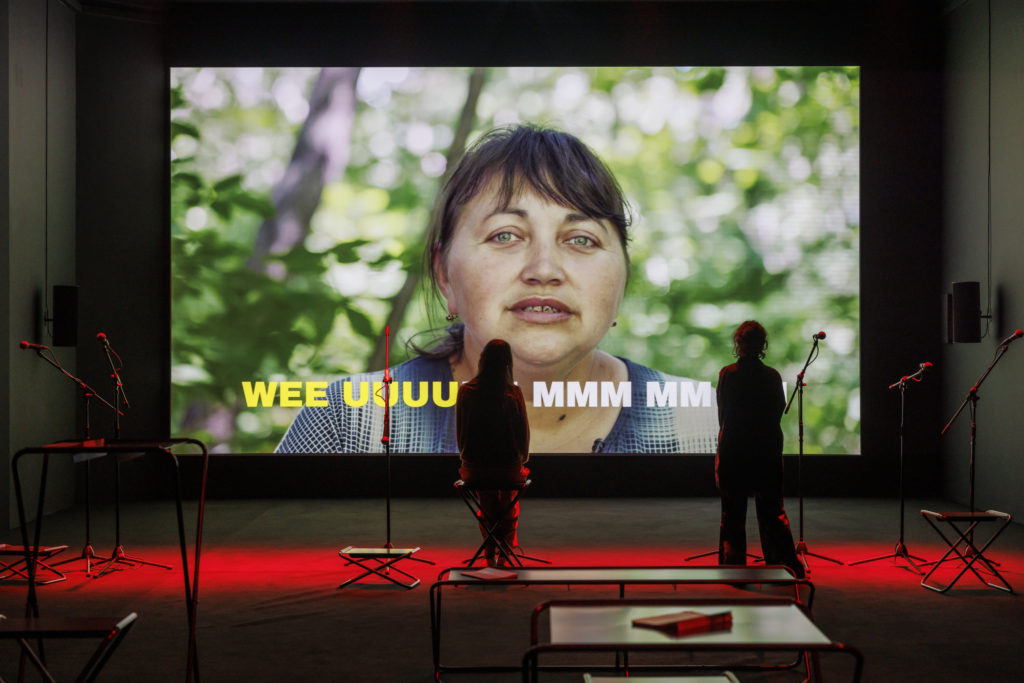
Japan Pavilion
This year, the sculpture Yuko Mohri was presented in Japan. Julia Halperlin from Atnet.com writes: Mohri has crafted a whimsical funhouse featuring Rube Goldberg-like contraptions made from everyday items such as plastic sheeting, buckets, and hoses. This display, part of an ongoing series by the artist, draws inspiration from the inventive and improvisational methods employed by workers to repair leaks in the Tokyo subway system. The materials are transformed into instruments within a quirky orchestra. A whirring fan sets a rubber tube in motion, causing a nearby shopping bag to rustle; raindrops falling onto a plastic sheet trigger a set of wind chimes. Engaging all the senses, the installation embodies the interconnectedness of all things—while infusing the experience with humor and energy.
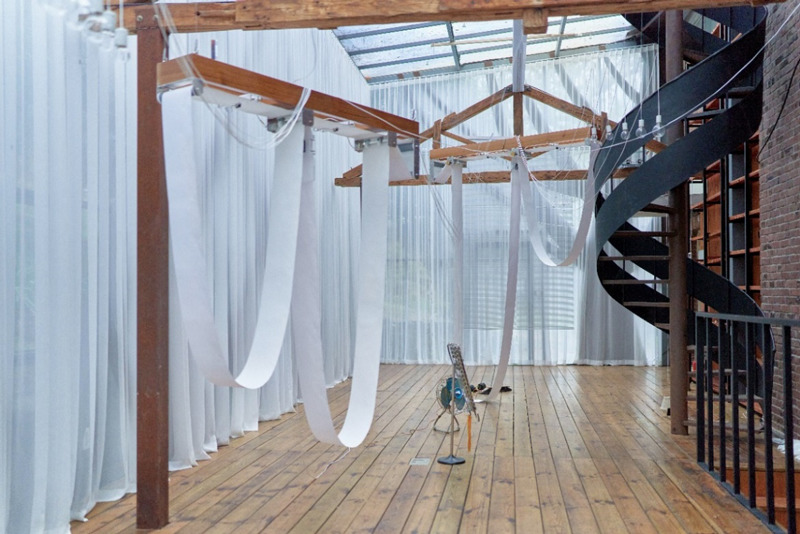
Türkiye Pavilion
Gülsün Karamustafa presents this year’s Türkiye Pavilion. The works reflects the artist’s contemplation of current affairs on various scales, from inter-personal to inter-national, encompassing themes of deficiency and desolation. Upon entering the Pavilion, visitors encounter three striking chandeliers suspended from above, crafted from discarded Venetian glass, each representing a monotheistic faith: Christianity, Judaism, and Islam. These luminous symbolic objects are shrouded in a web of barbed wire – conveying the historical tensions and quarrels between each religion and serving as a lens through which she explores the state of our world today. Hollow, plastic moulds that resemble concrete columns are scattered throughout the space, the choice of materials starkly contrasting the traditional associations to glory, artillery and power. Shattered Venetian glass emerges as a recurring motif within the installation as a material that resonates deeply with Karamustafa’s feelings. Situated within the pavilion are four dismantled wheeled carts – with their ends cut off on either side – loaded with discarded remnants of Murano glass shards, evoking the transportation of heavy cargo. These works directly link to the historical significance of the Sale d’Armi, once Venice’s largest production center during the pre-industrial era and a potent symbol of military power. The project also includes a new film by the artist, comprising black and white images from found propaganda footage depicting migration, war, and demonstrations from around the globe.
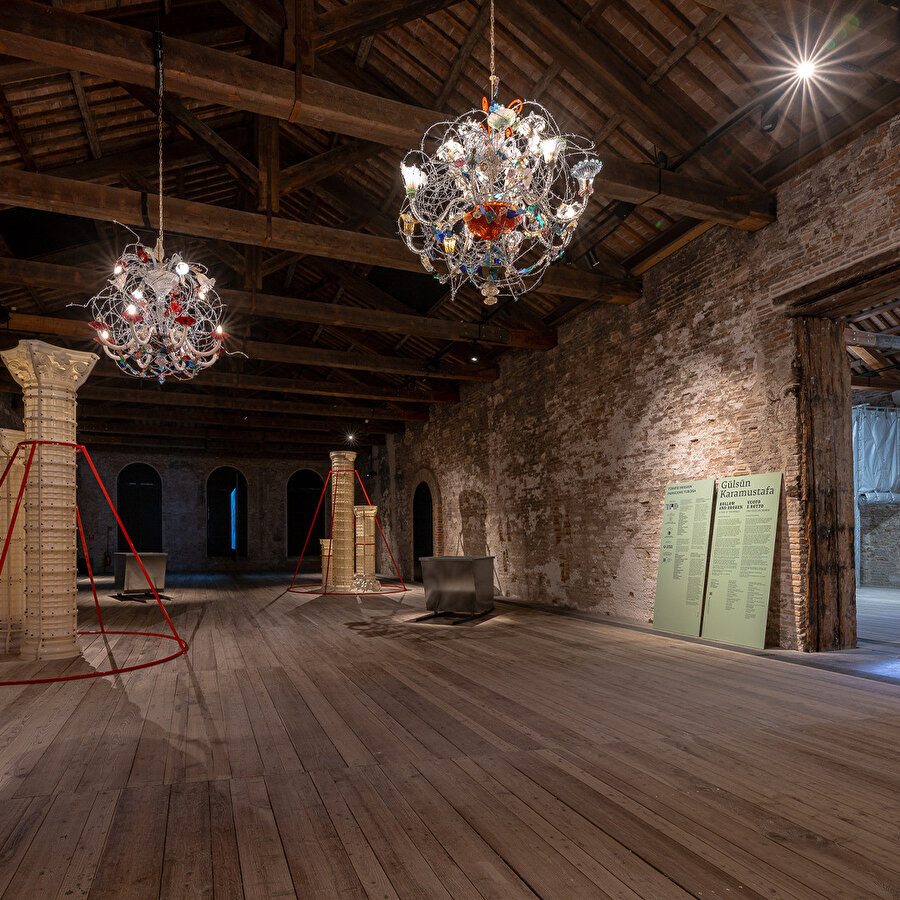
Australia Pavilion
At the Australian pavilion, the artist Archie Moore presents “kith and kin,” is an ode to the First Nations people of Australia and a spotlight on the enduring, negative consequences of colonialism. Moore also won the Venice Biennale’s prize fort his year. Within this quietly moving, serene environment, all black and white with a reflecting pool, Moore has covered the walls and ceiling with a hand-drawn genealogical chart. Spanning over 65,000 years and 2,400 generations, it illustrates his connections to Kamilaroi, Bigambul, British, and Scottish lineages. This vast, painstakingly drawn map offers a stunning vision of links across generations and peoples, resembling a constellation of ancestral names.
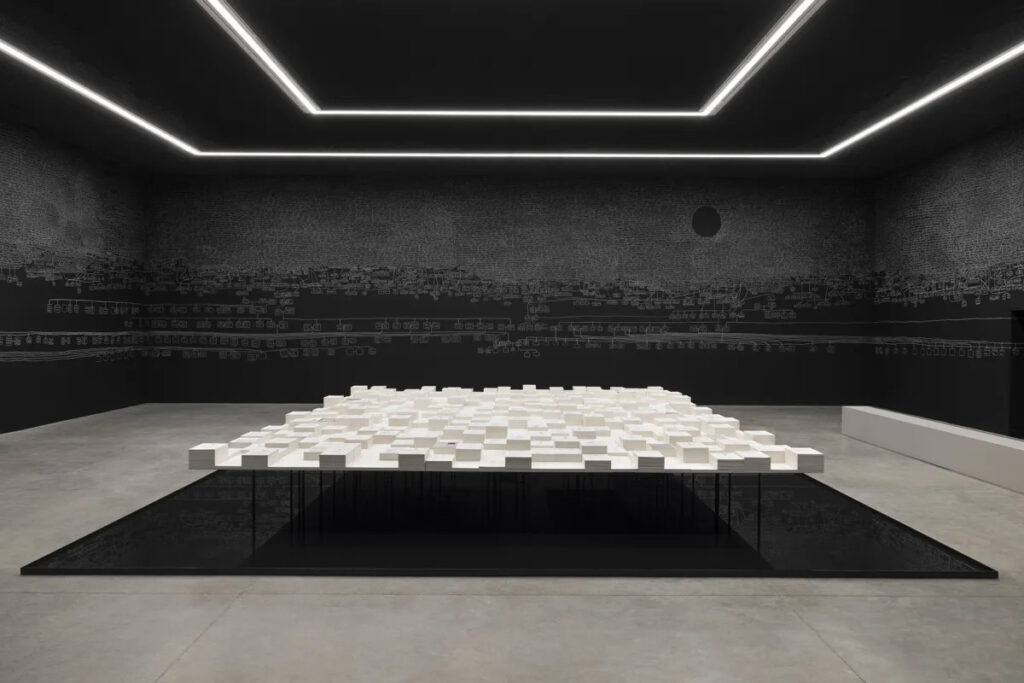
PHOTO ANDREA ROSSETTI/©ARCHIE MOORE/COURTESY THE ARTIST AND THE COMMERCIAL; COMMISSIONED BY CREATIVE AUSTRALIA
Uzbekistan Pavilion
Uzbek diaspora artist Aziza Kadyri explores the experiences of Central Asian women and how they reimagine their identities in the process of migration. In a deconstructed theatre backstage, costumes become sculptures alongside audiovisual work co-created with Tashkent-based Qizlar Collective, rooted in women’s narratives, exploring embodied memories and the relationship between the body and its environment. The installation links Uzbek Suzani embroidery and AI image generation, unveiling AI’s biases and its global impact on shared memories. While in the space, the viewer is invited to embody both the observer and the observed, shifting between states of exposure—changes perceptible only to the onlookers beyond this space of accidental performance.

Serbia Pavilion
Visual artist and scenographer Aleksandar Denić represents the Pavilion of Serbia. Titled Exposition Coloniale, the exhibition deals with ideas of residence versus being in transit, housed in the pavilion that has itself been passed down the hands of several nations – initially intended for Sweden and Greece and then acquired by Romania and former Yugoslavia. Being permanently displaced in Germany and other German-speaking regions, Denić transforms the space with a ‘reflective discomfort’ that provokes visitors to question their sense of belonging and ‘feel like a foreigner in [their] own country’. The exhibition includes music and sounds, lights, heating systems and other sensory elements.

Saudi Arabia Pavilion
Manal AlDowayan represents Saudi Arabia. She is known for her participatory practice that deals with collective memory, acts of forgetting as well as experiences of women. Her most famous piece Suspended Together (2011) is an installation consisting of 200 fibreglass doves. Each included a permission-to-travel document – donated by Saudi women aged between six months and 60 – of the kind required for all Saudi women to travel.
